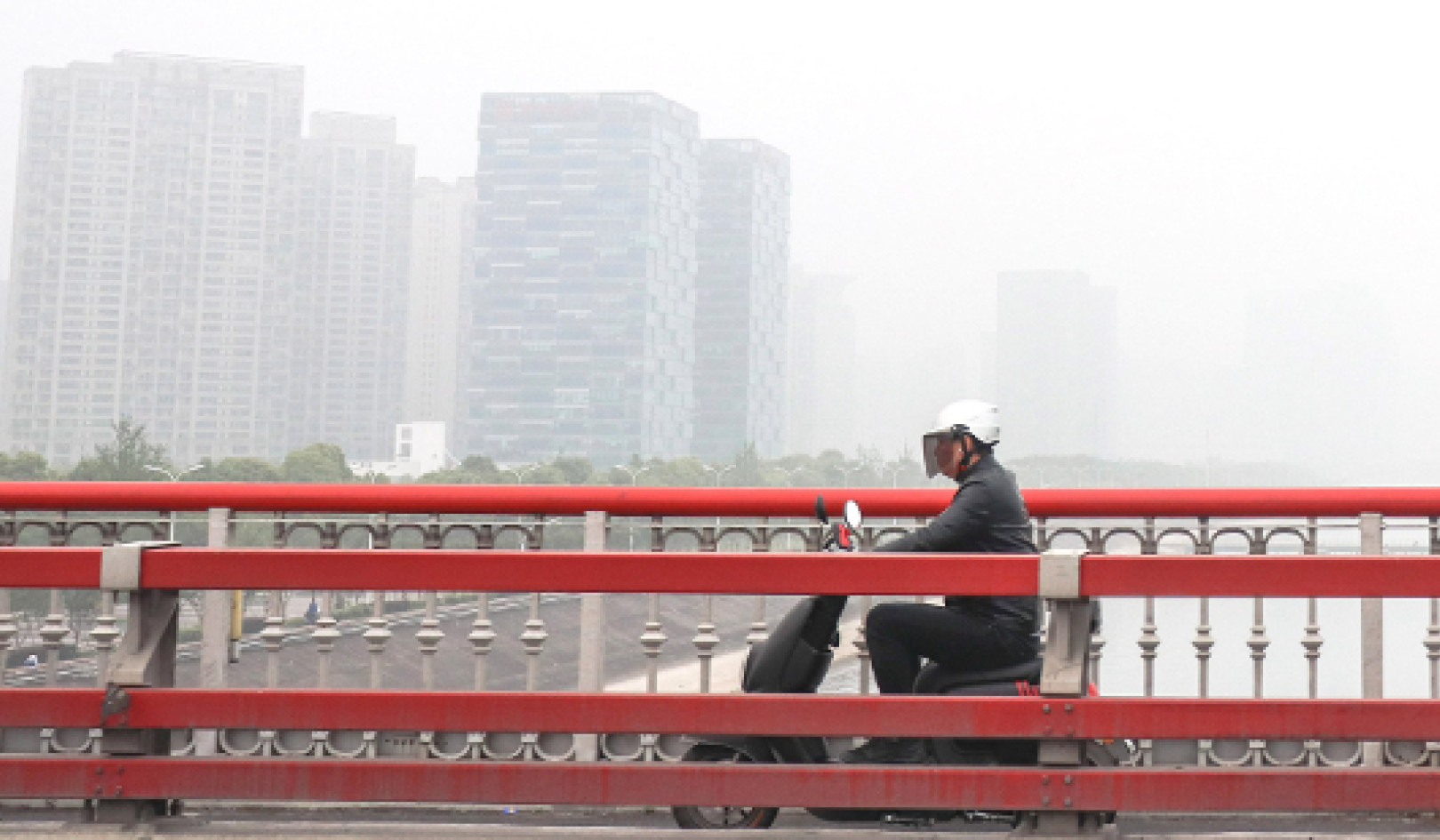
If public health bodies and policymakers put greater focus on improving the work environment, it could achieve major gains in population health and reduce health inequities. (Shutterstock)
Work has long been considered a social determinant of health. Like housing, education, income security and other matters of economic and social policy, work can be a key factor in creating, maintaining or exacerbating unequal health outcomes across different societal groups.
But if work is already understood to be a social determinant of health by regulators and policymakers, it has been underused as a lever to address health inequities. That’s the main case we — an international group of work and health researchers — have made in a series of articles on the relationships between work and health recently published in The Lancet.
In these articles, we suggest that if public health bodies and policymakers put greater focus on improving the work environment, it could achieve major gains in population health and reduce health inequities.
There are historical examples that demonstrate this is possible — such as the 1919 Hours of Work Convention, where International Labour Organization member states agreed to limit working hours to improve health — but they remain infrequent.

Not enough attention is paid to the role that work conditions and environments play in creating, worsening or even alleviating health inequities. (Shutterstock)
Instead, occupational health tends to be siloed from broader population health, and occupational health and safety activity tends to focus on visible work hazards related to injuries and illnesses. Less attention is paid to the role that work conditions and environments play in creating, worsening or even alleviating health inequities.
Yet, broader societal factors such as immigration, affordable daycare, education and training, and disability policy impact the availability and nature of work; and work conditions also have reciprocal impacts on these societal factors.
Work and health
The unequal distribution of diseases across occupational groups has been documented since the 1700s. However, it wasn’t until the 1980s, with studies using large employer cohorts, such as the Whitehall cohorts, that modern research methods of epidemiology (causes and distribution of diseases and health) were used to break down the contributions of specific lifestyle, biomedical and work-related factors on differences in worker health.
The Whitehall studies on white-collar civil servants — occupations historically considered safe — highlighted that factors such as low control over one’s work were related to leading causes of disease.
In the decades since, research methods and opportunities to link data have evolved. Large multinational cohorts, including hundreds of thousands of participants linked to administrative health service data, are now possible.
These advances in data and quantitative methods increasingly allow us to ask more policy-relevant “what if” questions about the broader health impacts of changes to specific aspects of the work environment.
Factors that will affect work and health inequity

Policymakers need to pay attention to the distinctive patterns of health inequities experienced by different groups of migrant workers and provide tailored protective measures for each group. (Shutterstock)
The Lancet series includes a paper that analyzes evidence and provides recommendations on workplace mental health, and another that focuses on labour market inclusion.
In addition to these areas, we also prioritize six factors that will impact work and health inequities into the future. These are:
-
Telework. The rise in telework or remote work can lead to reduced psychosocial support from colleagues and greater social isolation. It may also erode responsibility by both employers and regulators for ensuring health and safety of those working from home.
-
International migrant workers. Refugees, immigrant and temporary migrant workers experience different labour market and health trajectories after arrival in Canada. Policymakers need to pay attention to the distinctive patterns of health inequities experienced by different groups of migrant workers and provide tailored protective measures for each group.
-
Intersections between gender, age, race, ethnicity and social class. We need to pay attention to the compounding effects that different social stratifiers have on the types of jobs (and subsequent differences in physical and psychological exposures at work) available to different groups in society, and identify opportunities to address these differences.
-
Precarious employment. With the continued erosion of full-time, permanent jobs and the rise of platform-based gig work, precarious work continues to spread across the global labour force. While precarious work is associated with greater workplace hazards and fewer protections, there is no reason this needs to be the case. We need to develop and implement innovative approaches, such as portable benefits, to make this type of work relationship safer.
-
Long and irregular work hours. Working long or irregular hours is associated with higher risks of stroke and heart disease, greater alcohol use and work injuries. Regulations on working time are a central theme of labour rights and labour protections, but the relationship between working time and worker health depends on social context. While those in secure and stable work may see health benefits from working fewer hours, for those in freelance, contract, self-employed and other similar arrangements, reduced hours means less income security.
-
Climate change. The effects of climate change on work are difficult to predict, though potentially severe. While it is clear that increased ambient temperature, air pollution, ultraviolet radiation exposure, extreme weather and the spread of vector-borne diseases will directly impact some industries and occupations, the flow-on effects across the labour market are less clear. We need to ensure these effects are not disproportionately impacting those in the lowest-paid jobs, who likely have the least resources to withstand the challenges.
Reducing health inequities
In the face of these emerging challenges, there is a need to develop and test interventions to reduce work-related determinants of unequal health.
These interventions can target individual workers when appropriate, but to be most effective, they should focus more broadly on changes at the organizational level, such as workplaces, and at sectoral and societal levels, including provincial, territorial and national policies that affect workplaces. This will only be possible with greater collaboration across both research and professional disciplines, as well as provincial and federal ministries.
Regulations about hazards at work have been the exclusive domain of occupational health and safety specialists for too long. Addressing the broader aspects of work and working conditions that are social determinants of health will need greater involvement from other fields, including economists, legal scholars, and social and political scientists.
Occupational health needs to work hand-in-hand with other sectors — including but not limited to public health — to develop, implement and evaluate policy solutions that will help make the work people do, and the environments they work in, healthier and more equitable.![]()
Peter Smith, Senior Scientist, Institute for Work & Health. Professor, Dalla Lana School of Public Health, University of Toronto; Arjumand Siddiqi, Professor and Canada Research Chair in Population Health Equity, University of Toronto; Cameron Mustard, Professor of Epidemiology (Emeritis), University of Toronto; John William Frank, Professorial Fellow, Usher Institute of Population Health Sciences and Informatics, The University of Edinburgh, and Reiner Rugulies, Adjunct Professor, Psychosocial Medicine, Section of Epidemiology, Department of Public Health, University of Copenhagen
This article is republished from The Conversation under a Creative Commons license. Read the original article.
Related Books:
The Body Keeps the Score: Brain Mind and Body in the Healing of Trauma
by Bessel van der Kolk
This book explores the connections between trauma and physical and mental health, offering insights and strategies for healing and recovery.
Click for more info or to order
Breath: The New Science of a Lost Art
by James Nestor
This book explores the science and practice of breathing, offering insights and techniques for improving physical and mental health.
Click for more info or to order
The Plant Paradox: The Hidden Dangers in "Healthy" Foods That Cause Disease and Weight Gain
by Steven R. Gundry
This book explores the links between diet, health, and disease, offering insights and strategies for improving overall health and wellness.
Click for more info or to order
The Immunity Code: The New Paradigm for Real Health and Radical Anti-Aging
by Joel Greene
This book offers a new perspective on health and immunity, drawing on principles of epigenetics and offering insights and strategies for optimizing health and aging.
Click for more info or to order
The Complete Guide to Fasting: Heal Your Body Through Intermittent, Alternate-Day, and Extended Fasting
by Dr. Jason Fung and Jimmy Moore
This book explores the science and practice of fasting offering insights and strategies for improving overall health and wellness.























